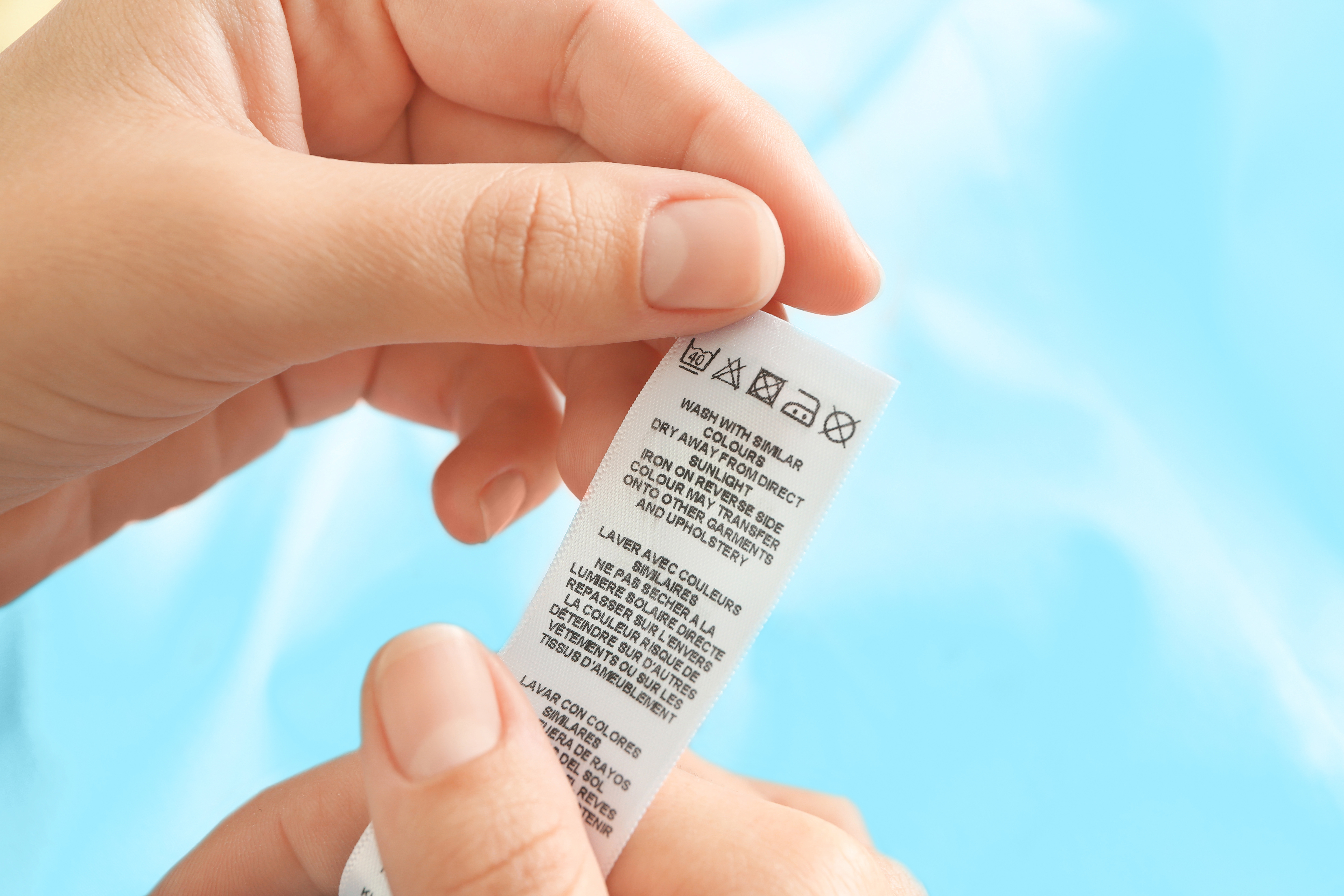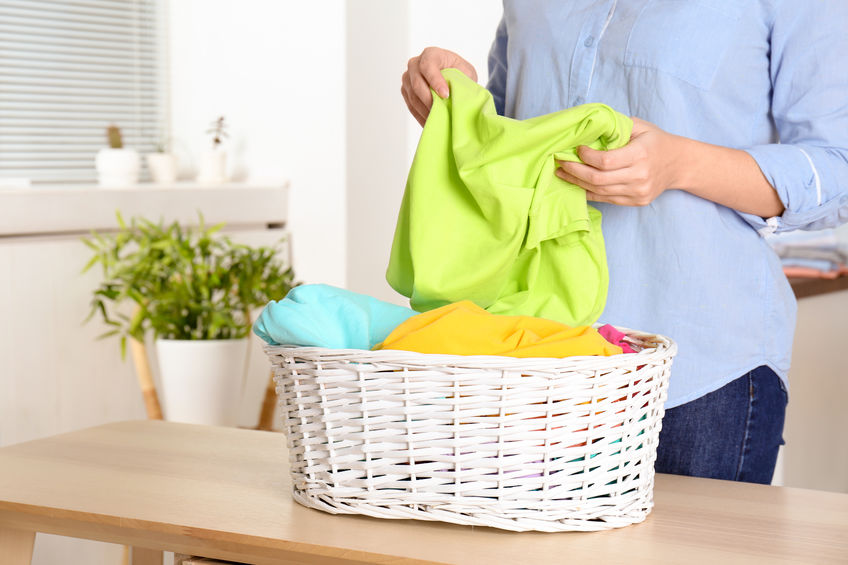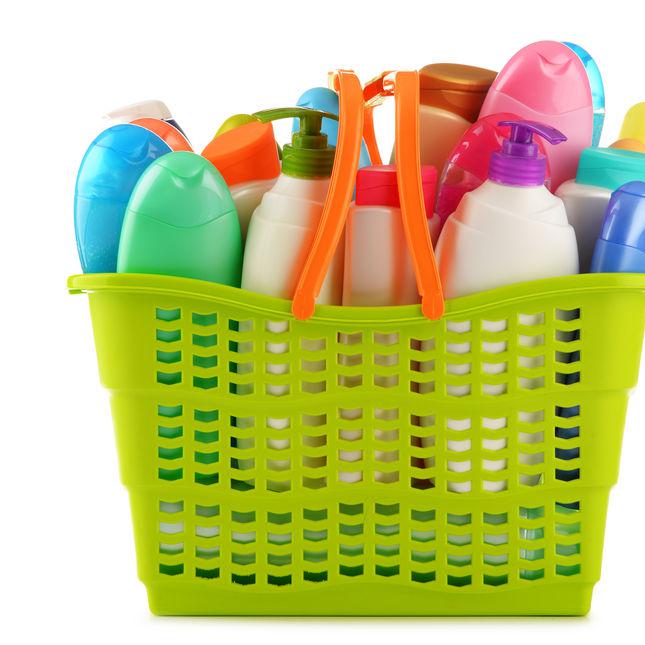- Clean Home
- Laundry Tips & Techniques
- How To Sort Clothes
How To Sort Clothes For Washing
How to sort clothes. Don't feel guilty if you've forgotten the laundry basics that Mom taught you. Here's how to sort clothes like a pro in no time.
The secret behind getting everything clean safely is to sort your laundry into loads of similar colors, wash cycles, and water temperature needs, and to set aside stained garments for prewash TLC.
Sorting Made Simple
Look to the clothing care labels on your garments for guidance. It's how to sort clothes the right way - and it makes selecting the proper machine settings simple.
Today's international care labels often have symbols as well as, or instead of, words. Most of the symbols are pretty self-explanatory. A cuplike icon with dots tells you the wash temperature (one dot for cool/cold, three for hot).
A simple circle indicates clothing you should dry-clean, and a circle overlaid with an X identifies garments that should never be sent to the dry cleaner.
But when clothes are labeled dry-clean only, must you obey? The dry-cleaning industry will tell you, yes, and if you can't live without that silk blouse, you should comply.
If you clean it yourself, you risk damage like shrinkage, color loss or fading, and fabric texture changes - silk can lose its sheen, and linen can end up looking lumpy instead of crisp.
The benefits: If you don't mind gambling, you save money and have the item ready when you need it.
Your best hand-washing bets (cold water, please) include plain-weave light-colored silks, cashmere (washed inside out), fuzzy sweaters, and fancy loose-weave knits.
While dry cleaning will keep these clothes looking new longer, some of these may be carefully hand-washed and air-dried.
How to Sort Clothes Reading Labels
Start sorting by reading each garment's label and separating into six piles:
- Cold-water whites
- Warm-water whites
- Cold-water pastels and light colors
- Warm-water pastels and light colors
- Cold-water brights and darks
- Warm-water brights and darks
Of course, six piles could translate into six loads; if you've got the time during the evening, this is the safest way to keep your clothes looking good.
However, if time is short and your needs are immediate, here's how to sort clothes quickly: Combine and wash the cold-water pastels and light colors with the cold-water brights and darks; do the same for your warm-water loads.
Resist the temptation to mix any colors with white loads.As you sort, be on the lookout for items that have spills or stains (see this laundry stain removal guide for tips on removing some common stains), really grungy jeans and kids' clothes (very dirty clothes can transfer dirt in the wash to lightly soiled clothes), and those that require a gentle wash cycle.
How to sort clothes for these items: Create three separate stacks. For hot water, the gentle cycle, and those requiring pretreatment for stains.
Once again, you can mix things up in a pinch: If you have only a few light-colored cold- or warm-wash items that require the gentle cycle throw in similarly colored items that need the same temperature.
The add-ins won't get as clean with the gentle cycle's agitation, but it's OK to simplify your laundry life. Still, always go with the gentlest cycle and coolest temperature when you mix fabrics and colors.
Be sure also to check trim and decorations for colorfastness. One red-trimmed white shirt could leave you with a load of pink clothes.
Unsure? Dip a hidden corner of the fabric or an inside seam in your liquid laundry detergent or a mixture of your powder detergent and hot water. Rinse and let it air-dry. If the color remains unchanged, the garment is colorfast.
How to Sort Clothes by Laundry Temperature
It's time to select a wash cycle and laundry temperature. Let your fabrics determine the cycle if the label doesn't tell you: sturdy fabrics, such as jeans and heavy cotton shirts, get the normal or regular cycle; combinations of synthetic and natural fibers need the permanent press cycle; sheer and delicate fabrics do best in the gentle cycle.
It's time to select a wash cycle and temperature. How important is the right temperature? It directly affects the performance of the laundry detergent, the wrinkling of fabrics, and the life span of your clothes - so follow the care labels.
If the label is not legible, here's how to sort clothes by fabric type: hot water works well on ground-in and hard-to-remove dirt on sturdy fabrics.
Still, few labels recommend regular hot-water washing. Use it to clean seriously soiled garments (gardening or children's clothing), and to regularly disinfect dish towels, washcloths, bath towels, bedding, and pillowcases.
This is one time you don't want to mix lights and darks, as hotter temperatures can cause some fabrics to bleed. (Whites warrant the solo treatment no matter what the temperature).
Warm water minimizes color fading and wrinkling. Choose it for washing synthetic fibers, natural and synthetic blends, and moderately soiled fabrics.
Cold water will protect most dark or bright-colored clothing from running and minimizes shrinkage of washable woolens.
Use it for lightly soiled clothes and those with blood, wine, or coffee stains (which may set if washed in warm or hot water), regardless of fabric.
If you're going to do a cold-water wash, check first for stains and spots and pretreat garments; detergent doesn't clean heavily soiled areas as well in cold water.
If you do lots of cold-water washes, consider using a laundry detergent designed to work in all temperatures.
But for the rinse cycle, cold water is excellent for all types of loads. Another benefit: A cold-water rinse can reduce the energy used per load by up to one-third and minimize wrinkling in synthetic or permanent-press fabrics.
How to Sort Clothes To Minimize Snags and Lint
To keep snags and lint to a minimum, here's how to sort clothes and prepare them for a spin: zip zippers, button buttons, brush away lint, and empty pockets before tossing clothes into the washer.
Now separate lint givers, like fuzzy sweatshirts, chenille robes, flannels, and towels, from lint takers, such as knits, corduroys, and permanent-press and synthetic fabrics.
- Clean Home
- Laundry Tips & Techniques
- How To Sort Clothes










